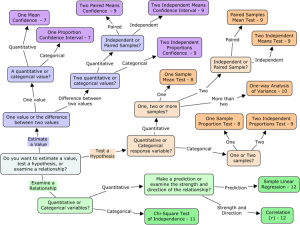

The use of Bayes factor in clinical cardiology research. Latent Variable Models and Networks:Statistical Equivalence and Testability. Van Bork R, Rhemtulla M, Waldorp LJ, Kruis J, Rezvanifar S, Borsboom D. A 'Weight of Evidence'approach to evaluating structural equation models.

Análisis de las propiedades psicométricas de la Escala de Autoeficacia de la Conducta Alimentaria en adolescentes mexicanos.

Trujillo-Hernández PE, Flores Peña Y, Gómez Melasio DA, Lara Reyes BJ, Ángel García J, Gutiérrez Valverde JM. A-priori Sample Size Calculator for structural equation models 2020. Lower bounds on sample size in structural equation modeling. Principles and Practice of Structural Equation Modeling. ❼uál es el tamaño muestral adecuado para validar un cuestionario?Nutr Hosp 2021 38(4):877-8. Roco Videla A, Hernández Orellana M, Silva González O. The minimum effect of interest or the clinically important effect according to previous quantitative systematic studies can also be set as a cut-off point, which is favorable for clinical decision making according to the estimation of the weight of evidence of clinical results ( 10).ġ. The Bayes factor (BF) makes it possible to specify a minimum sample with conclusive evidence (BF > 10) of the significant effect beyond the significance values and the various statistical analyses by converting the effect magnitudes ( 8- 10). It is also useful for network analyses because of statistical similarity to SEM models ( 7), with an anticipated effect size adjustment of 0.10 as minimum value of moderate magnitude in partial correlation networks (partial r ≥ 0.10) that are identified as one-dimensional models where all variables in the network are associated. Soper's online calculator ( 4) also allows determining the minimum sample in multiple regression models and Student's t-statistics. This favors the selection of the best SEM model considering the a priori sample power analysis that provides greater confidence in the clinical conclusions as a first step to take into account in the identification of the most acceptable structure of the models evaluated, given the estimation of the evidence of the reported parameters ( 6). Such finding indicates that the previous study included a suitable sample according to the complexity of the SEM model. ( 5) presented a structural model for a measure of self-efficacy of eating behavior in 467 Mexican adolescents, which has 16 observable variables and four latent variables with an anticipated effect size of 0.30 (recommended for instrumental SEM research), a desired probability of 0.05 and a statistical power level of 0.95, the minimum recommended size is 207 participants. As an example, the study by Trujillo-Hernández et al.
#Statcalc online professional
The sample calculation was performed using an online calculator ( 4), where a minimum sample size accessible to any health sciences professional or researcher can be obtained. We considered the minimum statistical power criterion value of 0.80 or greater magnitude with a probability level α (0.05) applied to any research design employing a probability or nonprobability sampling technique in SEM study data collection ( 2). Therefore, it is essential to present a method for estimating sample size in SEM models by analyzing statistical power, effect size, probability level, number of latent variables, and observed variables to evaluate multiple clinical hypotheses ( 4). A recent study in the present journal presented some methodological recommendations for sample size in research involving confirmatory factor analysis ( 1) these latent variable models (not directly measurable) are in line with the structural equation method (SEM) used beyond instrument validation to address more complex research questions and to test models with multiple latent and observable variables in a single investigation ( 2).Ī meta-analysis of 74 articles found that about 80 % of investigations are based on insufficient sample sizes ( 3).


 0 kommentar(er)
0 kommentar(er)
